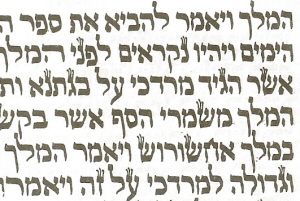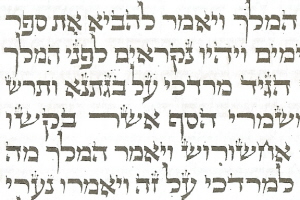Reeds have been a traditional Sephardi thing, and have contributed to the distinctive Sephardi script.
In a nutshell, a reed tends to give less contrast between thick and thin lines than a feather, and reed writing tends to show less contrast between thick and thin lines than feather writing. Compare the images below: the first is characteristically Sephardi reed-influenced script, and the second characteristically Ashkenazi and feather-influenced.


Speaking in general terms, Ashkenazi Jews tended to be in parts of Europe where quills were widely used, and Ashkenazi scripts often make heavy use of techniques and flourishes which rely on having a very flexible, very thin, very sharp writing instrument such as a quill, and trying to write that way with a reed will cause you much heartache. Sephardi Jews, on the other hand, tended to be in parts of the world where reeds were the writing instrument. A reed won't take an edge the same way a quill does, so it can't make those hair-thin vertical lines beloved of Ashkenazim, and it isn't as flexible, so the shapes are bolder and starker. This also makes Sephardi scripts quite a lot quicker to write, incidentally, which is why they are sometimes considerably cheaper to purchase.
A calligraphy marker resembles a reed a lot more than it resembles a quill, so trying to learn an Ashkenazi sta"m* alef-bet with a calligraphy marker will give you limited success. That's why my worksheets for beginners use markers but concentrate on skills, and don't go all the way to showing you how to make the fine details - it just won't really work. The logical thing would be for me to teach Sephardi script with calligraphy markers, but so few of my students are Sephardi that it doesn't make much sense really.
Here's a couple of rules from the scribal rule book of the Hida (Hayim Yosef David Azulai, late 18th century, Mediterranean regions), Torat Ha-Shelamim (chapter 18)
8. The quill should be made from a reed, not from a feather.
9. When the quill is ready for writing, he should put its tip in his mouth and roll it around in his spit (rir). He should say: Just as this spit is pure before it leaves the mouth, so shall this quill be pure when I write the holy Torah with it. This is because rir has the same numerical value as kadosh (holy) [210].
I don't write with reeds, myself, but I'd guess they're more flexible - easier to write with - if you soak them a bit before use, hence this custom. More of the Hida's rules here; more on quills shortly.
* sta"m - abbreviation for "sifrei Torah, tefillin, mezuzot."




No comments:
Post a Comment